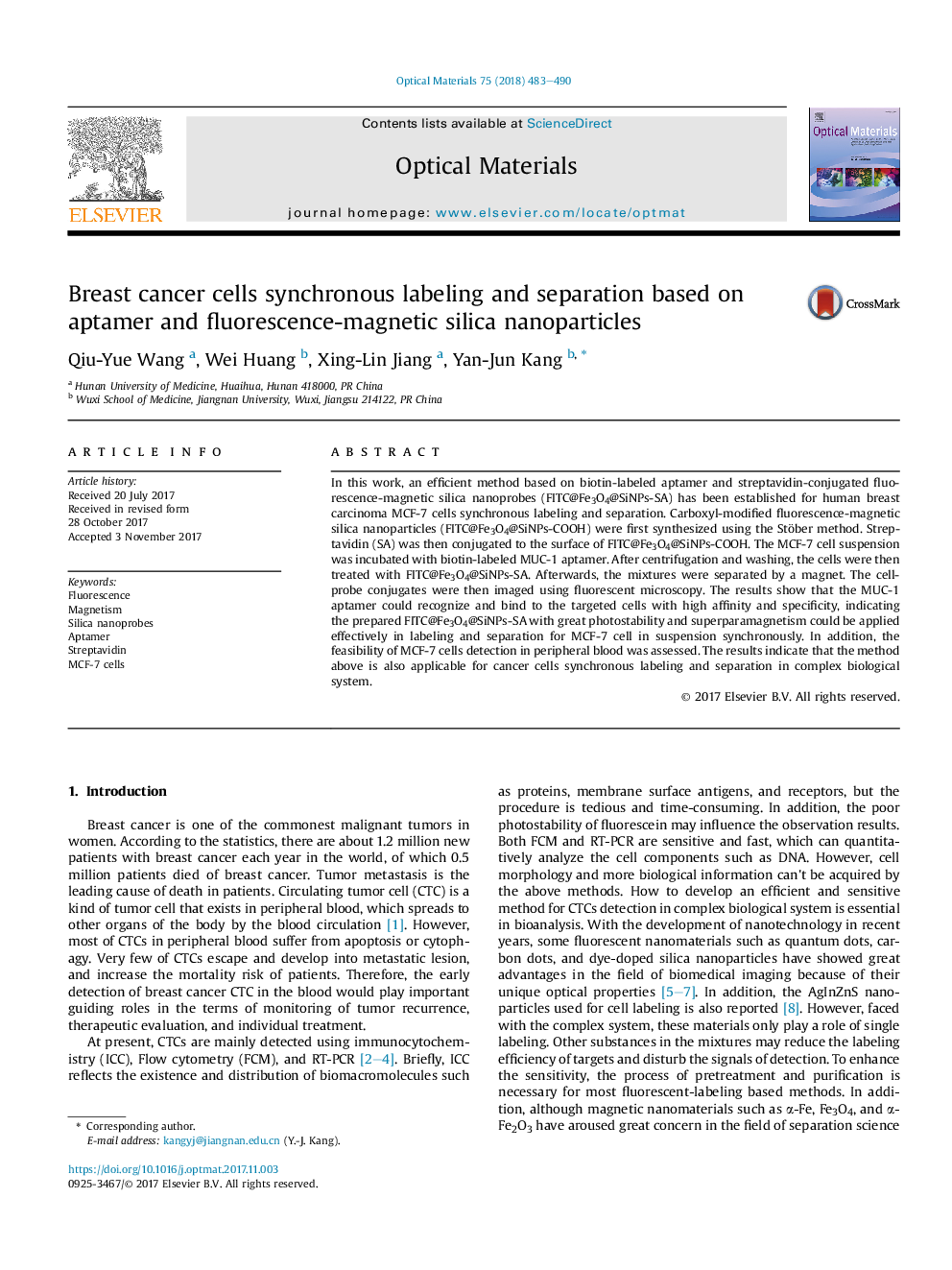| Article ID | Journal | Published Year | Pages | File Type |
|---|---|---|---|---|
| 7908034 | Optical Materials | 2018 | 8 Pages |
Abstract
In this work, an efficient method based on biotin-labeled aptamer and streptavidin-conjugated fluorescence-magnetic silica nanoprobes (FITC@Fe3O4@SiNPs-SA) has been established for human breast carcinoma MCF-7Â cells synchronous labeling and separation. Carboxyl-modified fluorescence-magnetic silica nanoparticles (FITC@Fe3O4@SiNPs-COOH) were first synthesized using the Stöber method. Streptavidin (SA) was then conjugated to the surface of FITC@Fe3O4@SiNPs-COOH. The MCF-7Â cell suspension was incubated with biotin-labeled MUC-1 aptamer. After centrifugation and washing, the cells were then treated with FITC@Fe3O4@SiNPs-SA. Afterwards, the mixtures were separated by a magnet. The cell-probe conjugates were then imaged using fluorescent microscopy. The results show that the MUC-1 aptamer could recognize and bind to the targeted cells with high affinity and specificity, indicating the prepared FITC@Fe3O4@SiNPs-SA with great photostability and superparamagnetism could be applied effectively in labeling and separation for MCF-7Â cell in suspension synchronously. In addition, the feasibility of MCF-7Â cells detection in peripheral blood was assessed. The results indicate that the method above is also applicable for cancer cells synchronous labeling and separation in complex biological system.
Related Topics
Physical Sciences and Engineering
Materials Science
Ceramics and Composites
Authors
Qiu-Yue Wang, Wei Huang, Xing-Lin Jiang, Yan-Jun Kang,
